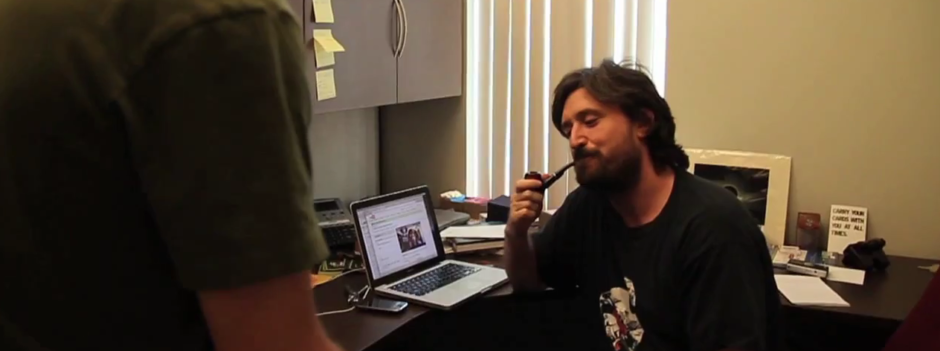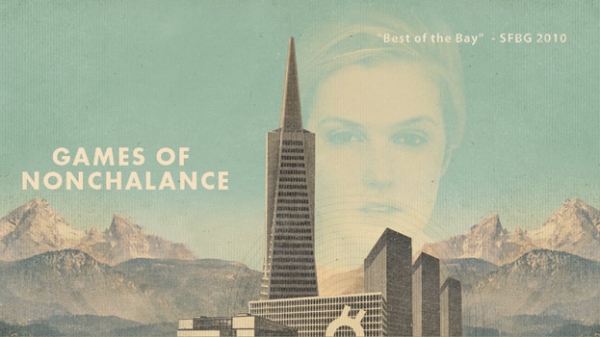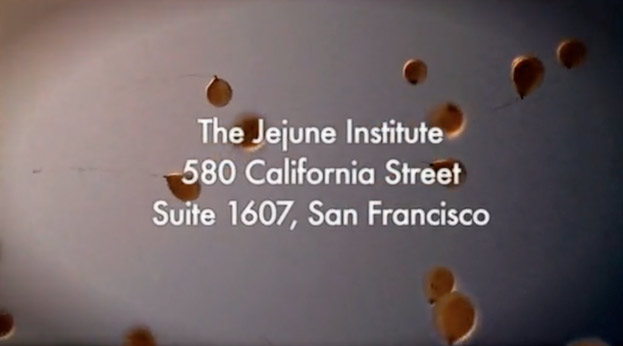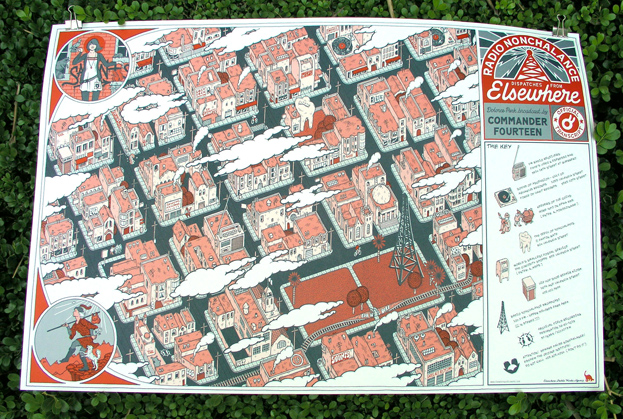[intro]Jeff Hull is the founder and creative director of Nonchalance, a hybrid arts consultancy based in San Francisco. At this year’s IndieCade, Nonchalance won the World/Story Award for their “epic, immersive, poly-media, real-world adventure,” the Games of Nonchalance. In the Games of Nonchalance, participants experience a vast transmedia interactive narrative woven into the fabric of the Bay Area, following threads of story and mystery through city streets and a wide array of on- and offline media artifacts. I caught up with Jeff Hull shortly after his appearance at IndieCade.[/intro]
Hi Jeff, glad to finally get around to this again (click here to read Jeff Hull’s previous interview with Jeff Watson). What’s been happening with Nonchalance over the past few months?
Basically hustling, trying to develop the business so we can continue to do radically creative work. A lot of elbow rubbing and hob-knobbery, presentations and pitches and such. There’s more exciting things, too, like doing a TEDx talk, and winning our first Indiecade Award! We’re quite proud of that.
For those who weren’t there, could you quickly describe what you did at IndieCade?
Without building the “Jejune Institute South”, we were trying to produce a street level installation to give visitors a sense of the real world nature of our game. There were a lot of art and artifacts from the game, with some gritty multi-media to back it up.
I thought of you recently as I was giving a talk on remix culture. We ended up discussing the Situationist concept of detournement, and it occurred to me that this is a good baseline description of the kind of work Nonchalance does. Is that what you’ve been doing all these years, detourning the Bay Area (and sundry other places)?
I never thought of it in that way, but the answer is yes, absolutely. I’ve always been a cut & paste, drag & drop kind of artist, and shamelessly so. I have no qualms about it because I know that what I’ve produced from these other sources is completely original.
One of the things I like the most about Situationist art is how it’s geared toward inspiring the viewer/participant to discover the untapped possibilities of the world around them — “to expose the appalling contrast between the potential constructions of life and the present poverty of life.” What are the potentials you’re exposing, and what kinds of poverty — intellectual, emotional, or even economic — do your projects work against?
“Potential constructions of life” is a great description for what we’ve attempted. We’re presenting this parallel universe in which we’re actively at war with banality and routine. It’s a guerrilla street war, too, not some hypothetical plane. The potential is for collective behavior that promotes warmth and trust, communicating something very meaningful through mass media, and generally allowing for variation, color and fun in the civic realm. The poverty exposed is that of spontaneity and creativity in every day life. We don’t always recognize how confined or restricted or repressed we are, and I’m speaking generally about “us” as a group or society, rather than us as individuals. Re-imagining and then reconstructing how we operate and function as a culture is our greatest aspiration. We can only do it in these microscopic slivers, though. The slivers exist in tandem with the rest of the world, often overshadowed by it, but they do exist, awaiting discovery by the curious dilettante.
Interestingly, the Situationists actually thought through the idea of pervasive or ambient urban/social detournement, which they (somewhat awkwardly) called “ultra-detournement.” In the same passage, they write, “the need for a secret language, for passwords, is inseparable from a tendency toward play.” Is this a need that you have? What needs do you see Nonchalance as being capable of fulfilling?
You always blow my mind with these questions, causing me to deeply reconsider everything I’m doing. The reference kind of evokes “The Crying of Lot 49” in which secret symbols are leading toward an entire social strata hidden right under our noses. I love the concept because it suggests a kind of sleeping giant in our midst. I suppose Nonchalance is gesturing toward that giant, prodding at it’s awakening.
A wise man once said that “[an] emancipated community is a community of narrators and translators.” This kind of “emancipation” seems to be a core component of some of your recent projects, most notably Scoop!, which invited players to become reporters for an actual (temporary) FM radio station. Are even your more narrative-heavy projects like The Jejune Institute really just sly ways to get people to narrate and translate their own community?
Yes and no. We certainly enjoy superimposing our own narratives over other more dominant stories, especially on the local scale. It’s very liberating. And within that framework we’ve strongly encouraged user generated content, and experimented with “open source” media programming, such as Scoop and the 01 project.
On the other hand, that user generated content is highly facilitated and curated by us (because we consider ourselves the ultimate arbiters of style and taste in our productions). We give people a creative template to work within. There are a few folks who have run with it, though, and gone completely off the map. I’m calling out Garland Glessner, Carolee Wheeler, and Michael Wertz, founders of the Elsewhere Philatelic Society. It borrows themes from Nonchalance, but it is it’s own unique and beautiful world. That’s a great example of people narrating their own communities.
Is this sort of what you mean by “Situational Design”?
Not exactly. To be honest, what I mean is “Lifestyle Curation”. That is; allow us to creatively direct an afternoon of your life. To offer a real world glimpse of the “what if”, and invite you to experience the world around you in a slightly different, although heavily contrived, way. I’m reclaiming the word “pretension” by the way. It is a positive force in my universe.
Do you feel that social media and screen-mediated forms of community are anathema to the kinds of visceral experiences you’re trying to create? If so, how is this conflict complicated/mitigated as pervasive computing and mobile media blur the boundary between the real and the virtual?
Actually, through conversations at Indiecade we began to develop a vision for a game on a traditional platform that promotes user generated content and real world interaction. That’s a direction I’d like to see video games take, where passivity becomes antiquated. Technology both empowers us and disables us to various degrees. It can support or discourage real world experience. I suppose the Games of Nonchalance represents a certain nostalgia for more sensual forms of expression and interaction. But how did we produce these experiences? How do most people discover them? Through computers.
Thanks for doing this again. Let’s catch up soon — and see you at IndieCade!
Always a pleasure, Jeff! Until next time.
[This interview originally appeared at the always-awesome jawbone.tv]
[See also: Trap doors and hatches all around: Jeff Hull on infusing variability and play into the workaday world]



